If you’re a fan of the geek culture, you may have heard of “carnival geeks.” But what exactly is a carnival geek, and where did the tradition come from? In this article, we’ll explore the history and evolution of carnival geeks, from their roots in traveling carnivals to their place in popular culture today. Also, going through interesting and unique examples and bringing back the memories of the most famous Carnival Geeks.
Don’t mistake it for the NERDS. Know the difference (Geek vs Nerd)
Who are the carnival geeks?
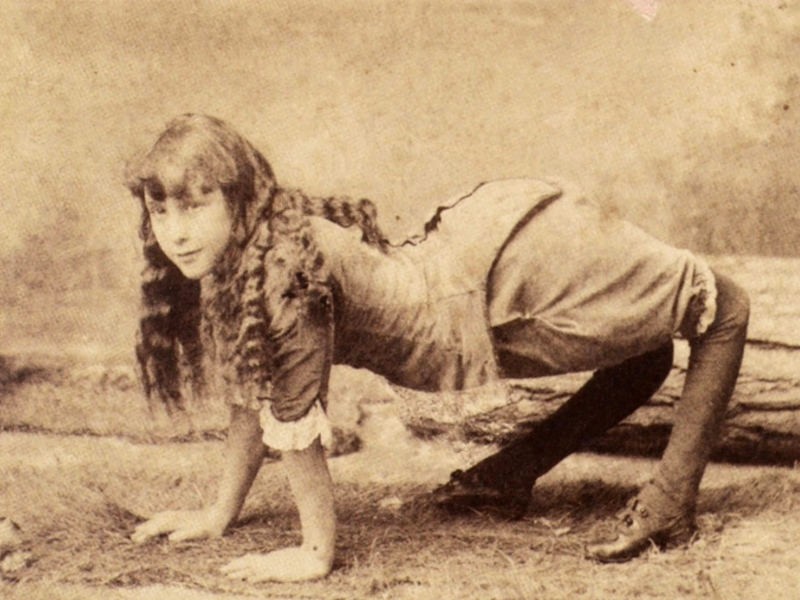
The term “carnival geek” originally referred to a performer in a traveling carnival who would perform stunts or feats of endurance for the entertainment of the audience. These stunts often involved the carnival geek biting the heads off of live chickens or snakes, eating live insects, or performing other gruesome or shocking acts.
A Deep Dive into the Strange and Wondrous World of Sideshow Performers – the circus geeks.
Carnival geeks were often seen as outcasts or misfits, and they were sometimes referred to as “human oddities” or “freaks” and with many other variations to the word Geek. They also carried a certain mystique and allure. The audiences were both repelled and fascinated by their performances, and carnival geeks often became popular attractions.
Carnival Geeks History, Tradition, and Evolution
Know the Origin, History, and Evolution of the GEEK
The tradition of traveling shows and circuses dates back to the early 19th century. They would set up tents in towns across Europe, America, and Indian Continent. These shows featured a variety of performers, including acrobats, clowns, and animal trainers. As the popularity of these sideshows grew, so did the demand for more extreme and gruesome acts. And as the popularity of the carnival geeks rose, so did the number of performers.
One of the earliest recorded instances of a carnival geek performing was in 1896 when a man named Tim Cavanagh appeared at a sideshow in New York City. Cavanagh was best known for biting off the heads of live chickens and snakes, a feat that not only fascinated but also horrified the audiences.
Despite the controversial nature of their performances, geeks were some of the highest-paid performers in the carnival world. Many geeks were also performers of other acts, such as fire-eaters, sword-swallowers, or escape artists, and their reputation as daring performers only added to their mystique.
During the mid of 20th century, the popularity of carnival geeks began to decline. But they still, remain a fascinating and sometimes controversial part of sideshow history. Today, the practice of biting the heads off live animals is animal cruelty and is illegal in many places.
In recent years, there has been a renewed interest in the tradition of carnival geeks, with some performers incorporating geek acts into their modern sideshow performances. However, the tradition of carnival geeks remains a fascinating and often misunderstood part of sideshow history.
Role of Carnival Geeks in Popular Culture
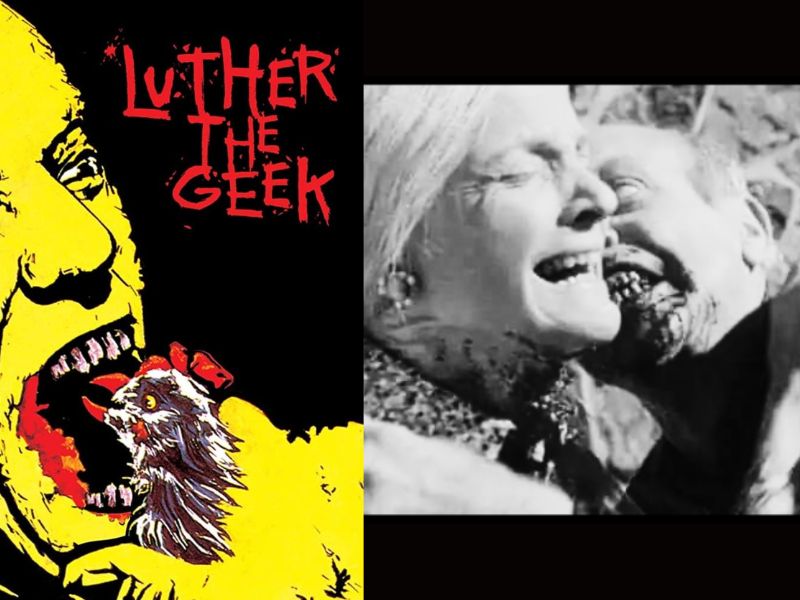
Today, the term “Geek” is often used more broadly to refer to anyone with a passion for geek culture. This includes fans of comic books, video games, sci-fi and fantasy, and other similar interests of any types of geeks.
Despite the decline of the tradition, carnival geeks have left a lasting impact on popular culture. They have also featured in numerous movies, TV shows, and books, often portrayed as eccentric and mysterious characters.
Portrayal of Carnival Geeks
- One of the most famous depictions of a carnival geek is in the 1932 movie “Freaks,” which features real-life carnival performers in the cast.
- In the 2005 film “The Devil’s Rejects,” one of the characters is a carnival geek who bites the head off of a live chicken.
- One example is the character of The Geek in the 1962 movie “Carnival of Souls.” The Geek is a sinister and frightening character who terrorizes the protagonist of the film. Another example is the character of Lobster Boy in the TV series “American Horror Story: Freak Show,” which is based on the real-life carnival performer Grady Stiles Jr.
- In the film noir classic “Nightmare Alley” (1947), based on the 1946 novel of the same name by William Lindsay Gresham, Tyrone Power plays a sideshow barker in a seedy carnival which includes a geek biting the heads off live chickens. Power’s character later succeeds as a charlatan mentalist, but then descends into alcoholism and is reduced to falsely portraying a geek as a means of survival in another sideshow.
- In one of Gresham’s non-fiction books, “Monster Midway” he further details the process of making an alcoholic or a drug addict perform a geek act in exchange for a fix.
- The 1990 Troma film “Luther the Geek” revolves around a geek named Luther, who eventually becomes a murderer who bites the heads of his victims.
Interesting and Unique Examples of Carnival Geeks
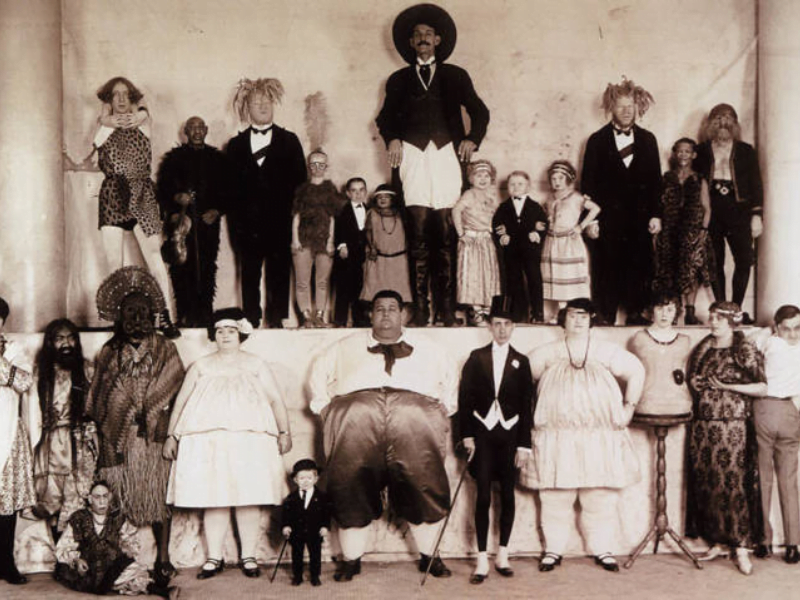
While the tradition of vintage carnival geeks may be in decline, there are still performers who continue to push the boundaries of what is considered acceptable or normal. Here are some examples of Carnival Geeks:
The Last Real Sideshow
The performer John Strong, who bills himself as “The Last Real Sideshow” performs a variety of acts, including the “Bed of Nails” and the “Human Blockhead,” in which he hammers a nail into his nose.
Harley Newman
Harley Newman, known for his extreme stunts, such as swallowing swords and walking on broken glass. He has been performing for over 30 years and has become a respected figure in the world of sideshow and carnival performance.
Melvin Burkhardt
Known as “The Human Blockhead,” Burkhardt has been performing for over 30 years. His signature act involves hammering a nail into his nose, and then pulling it out through his mouth. Burkhardt did lift heavy weights using his earlobes and drive a nail through a board using his forehead.
Mariko Takahashi
This Japanese performer was famous for her extreme sword-swallowing stunts. Takahashi is one of only a handful of women in the world who can swallow a curved sword. She also performs other acts such as fire eating and the bed of nails.
The Enigma
Enigma, best known for his appearance in the music video for the song “Love Shack” by The B-52’s. The Enigma’s signature look is a puzzle-piece tattoo that covers his entire body. He also performs acts such as sword swallowing and fire eating.
Ward Hall
While not a performer himself, Ward Hall is a legendary figure in the world of carnival geeks. Hall was a sideshow promoter and owner for over 50 years and is credited with keeping the tradition alive during its decline in the mid-20th century. Hall discovered and promoted numerous carnival geeks, including Melvin Burkhardt.
Zamora the Torture King
This performer is known for his extreme stunts, such as lying on a bed of nails while a cinder block is smashed on his chest. He used to perform the “human dartboard” act, in which he throws darts at a board while a volunteer holds the board in front of their body.
Famous Carnival Geeks
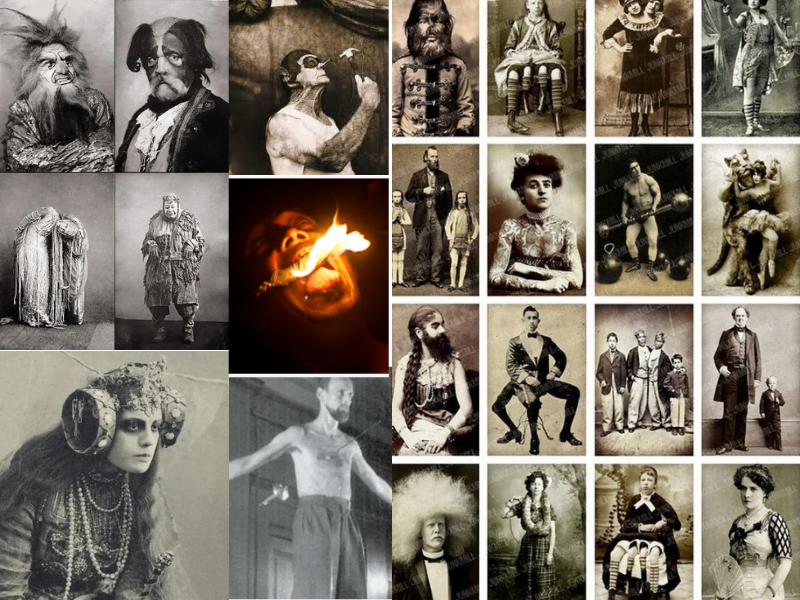
Here are a few most famous carnival geeks who have performed over the years. Each of these performers had their own unique talents and appearances and helped to keep the tradition of carnival sideshows alive for many years.
Famous Personalities that are deemed Geeks
Zip the Pinhead
Born William Henry Johnson, Zip the Pinhead was a performer in the late 1800s and early 1900s who had a small stature and an unusual appearance. Zip was billed as the “What Is It?” and was one of the most famous carnival geeks of his time.
Schlitzie
Also known as “Schlitze Surtees” or “Schlitze the Pinhead,” Simon Metz was a performer with microcephaly who worked in carnival sideshows during the 1920s and 1930s. Schlitzie appeared in the 1932 film “Freaks,” in which he played a key role.
Jo-Jo the Dog-Faced Boy
Born Fedor Jeftichew, Jo-Jo was a Russian performer with hypertrichosis, a condition that causes excessive hair growth all over the body. Jo-Jo performed in sideshows and circuses during the late 1800s and early 1900s and was one of the most famous carnival geeks of his time.
The Amazing Half-Man
Also known as Johnny Eck, John Eckhardt was a performer with sacral agenesis, a condition that caused him to be born without a lower body. Despite this, Eck was an accomplished acrobat and magician and was a popular performer in sideshows during the 1920s and 1930s.
Koo Koo the Bird Girl
Born Minnie Woolsey, Koo Koo was a performer with microcephaly who worked in carnival sideshows during the 1920s and 1930s. Koo Koo had a bird-like appearance and her ability to imitate bird calls made her one of the most famous carnival geeks of her time.
The Lobster Boy
Born Grady Stiles Jr., The Lobster Boy was a performer with ectrodactyly, a condition that caused him to have claw-like hands and feet. Stiles was a popular carnival geek in the 1970s and 1980s and will be remembered for his sharp tongue and bad temper.
The Two-Headed Boy
Edward Mordrake was born with a second face on the back of his head. Mordrake was eventually recruited into a carnival sideshow in the late 1800s.
The Elephant Man
Joseph Merrick, The Elephant Man was a performer with severe facial deformities who worked in carnival sideshows during the late 1800s. Merrick was kind and intelligent, and his story has inspired numerous books, plays, and movies.
The Human Ostrich
Arnold Henske also known as Mirin Dajo, claimed to have supernatural powers. He would drive large metal spikes through his body without suffering any apparent injury and had the ability to withstand extreme pain.
The Bearded Lady
One of the most famous carnival geeks of all time, The Bearded Lady was a performer with hirsutism, a condition that caused her to grow facial hair. Bearded ladies were a common attraction in carnival sideshows during the 1800s and early 1900s, and many of them became famous for their unique appearance.
These are just a few more examples of the many famous carnival geeks who have performed over the years. Each of these performers had their own unique talents and appearance and helped to keep the tradition of carnival sideshows alive for many years.
Final Words
The tradition of the carnival geeks might appear outdated or repulsive, but it is still fascinating and an important part of our cultural history. From its origins in the early circuses and sideshows to its impact on popular culture, appearing in movies, TV shows, and other forms of media, the legacy lives on. The tradition of carnival geeks has left an indelible mark on our collective imagination, besides the ongoing fascination with sideshow performance.
Hope you had a fun time reading this piece. Do take your time out to share some love. Till next time! See Ya. TCG signing off.
Wish you all a Happy Geek Pride Day.
References: Pop Culture

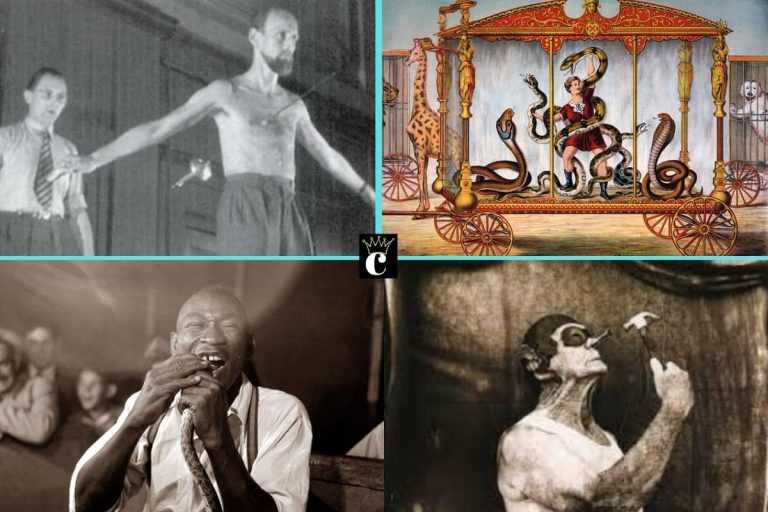
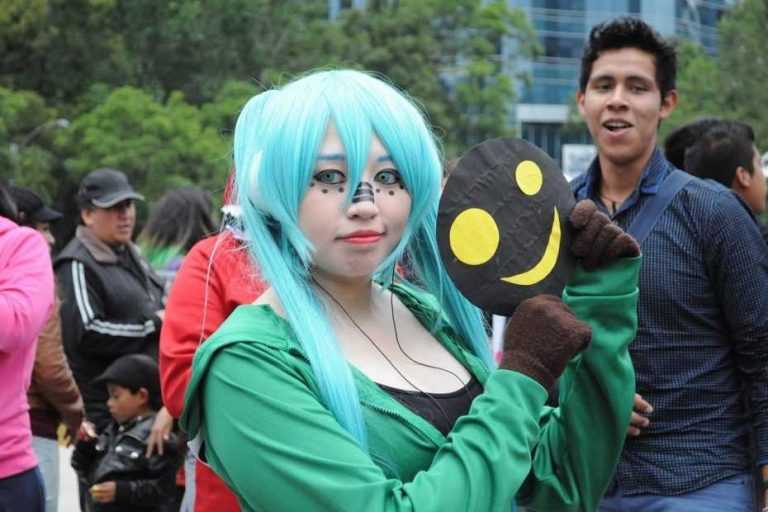


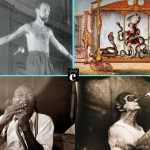

Props are obtained, some kind
I do trust all the ideas you’ve presented in your post. They are really convincing and will definitely work. Nonetheless, the posts are too short for newbies. May just you please lengthen them a bit from next time? Thank you for the post.
will try long form content for sure. here’s one – https://thecontentgeek.com/pseudo-messiahs-time-for-a-change/
I simply wished to say thanks all over again. It absolutely crazy coming across a new expert way you dealt with that made me to cry over contentment. I will be thankful for your guidance and in addition believe you really know what a great job you are always doing instructing the others all through your webpage. Most probably you have never come across any of us.
wish you luck!
Hey! I just want to give an enormous thumbs up for the nice info you might have right here on this post. I will likely be coming again to your blog for extra soon.
No matter if some one searches for his necessary thing, so he/she wants to be available that in detail,
thus that thing is maintained over here.
Wow, superb blog post.
Wow, marvelous blog layout! How lengthy have you been blogging for?
you make running a blog glance easy. The total look of your website is fantastic, as neatly as the content!
You really make it seem really easy along with your
presentation however I find this topic to be actually something that I believe I would by no means understand.
It seems too complicated and very wide for me. I’m taking a look forward for your subsequent post,
I will try to get the cling of it!
I have been absent for a while, but now I remember why I used to love this site. Thanks, I will try and check back more frequently. How frequently you update your website?
Hi, just wanted to tell you, I loved this blog post. It was inspiring. Keep on posting!
you are really a good webmaster. The site loading speed is incredible. It seems that you’re doing any unique trick. Moreover, The contents are masterwork. you have done a excellent job on this topic!
Great, impressed with your web site. I had no trouble navigating through all the tabs and related information ended up being truly easy to do to access. I recently found what I hoped for before you know it at all. Reasonably unusual. Excellent task..
Utterly composed subject material , thanks for information .
Thank you for sharing superb informations. Your site is very cool. I am impressed by the details that you’ve on this site. It reveals how nicely you understand this subject. Bookmarked this website page, will come back for more articles. You, my friend, ROCK! I found just the info I already searched all over the place and just couldn’t come across. What an ideal web site.
Great awesome things here. I’m very glad to see your article. Thanks a lot and i am looking forward to be in touch with you. Will you kindly drop me a mail?
I as well as my buddies ended up looking through this.
Thank you for actually having this form of awesome areas most people are really desperate to be aware of. My very own sincere apologies for not saying thanks to you sooner.